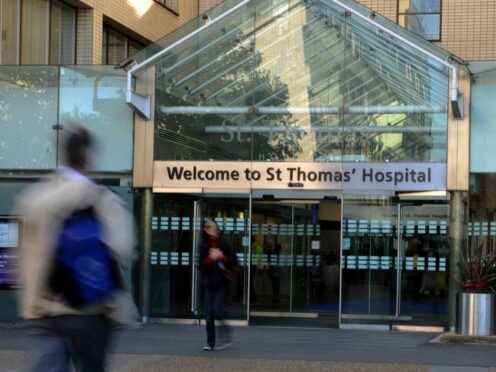Another 1,300 outpatient appointments and 205 elective procedures have been postponed amid ongoing disruption caused by a cyber attack which affected a number of London hospitals.
Pathology services provider Synnovis was the victim of a ransomware attack by Russian cyber gang Qilin at the beginning of June.
New figures showed that from June 17 to June 23, the two most affected trusts, King’s College Hospital NHS Foundation Trust and Guy’s and St Thomas’ NHS Foundation Trust, postponed 1,300 outpatient appointments and 205 elective procedures as a result.
This brings the total to 3,396 outpatient appointments and 1,255 elective procedures since June 3, NHS England London said.
In a joint statement, Julie Lowe, deputy chief executive at King’s College Hospital NHS Foundation Trust and Dr Simon Steddon, chief medical officer at Guy’s and St Thomas’ NHS Foundation Trust, added: “We are continuing to manage the cyber attack as a critical incident across both trusts, and we have also put measures in place to ensure we limit the disruption to patients resulting from the industrial action this week and next.
“We are having to postpone a number of operations and appointments at present, and we would like to apologise again to those patients affected.
“Staff are continuing to do an excellent job in very challenging circumstances, for which they deserve enormous credit.”
Earlier this week, NHS England confirmed data stolen in the attack had been published online.
According to the BBC, Qilin shared almost 400GB of data, including patient names, dates of birth, NHS numbers and descriptions of blood tests, on their darknet site and Telegram channel.
In a statement on Monday, NHS England said there was “no evidence” the cyber criminals had published an entire database, but that it could take “some weeks” to learn which people were affected by the attack.
Dr Chris Streather, medical director for NHS London, said the service has “started to see some real progress in general practice” in the last week, where he said the “impact of the cyber attack was significant on pathology services”.
“The mutual aid agreements that have been put in place to meet urgent demand has been introduced at pace across all six boroughs, and pathology services are currently able to operate at 45% of the capacity they had prior to the cyber attack,” he added.
“This is helping to increase the number of blood tests available in the most critical and urgent cases.
“It is important that patients with booked appointments continue to attend unless they have been contacted to say otherwise.
“We apologise again to everyone who has been affected, staff are working hard to rearrange affected appointments and treatments as quickly as possible.
“We do continue to experience disruption to services at King’s College Hospital NHS Foundation Trust and Guy’s and St Thomas’ NHS Foundation Trust.
“I would like to thank all the staff at the trusts who are working tirelessly to provide care and support to patients who have been affected by the incident.”
